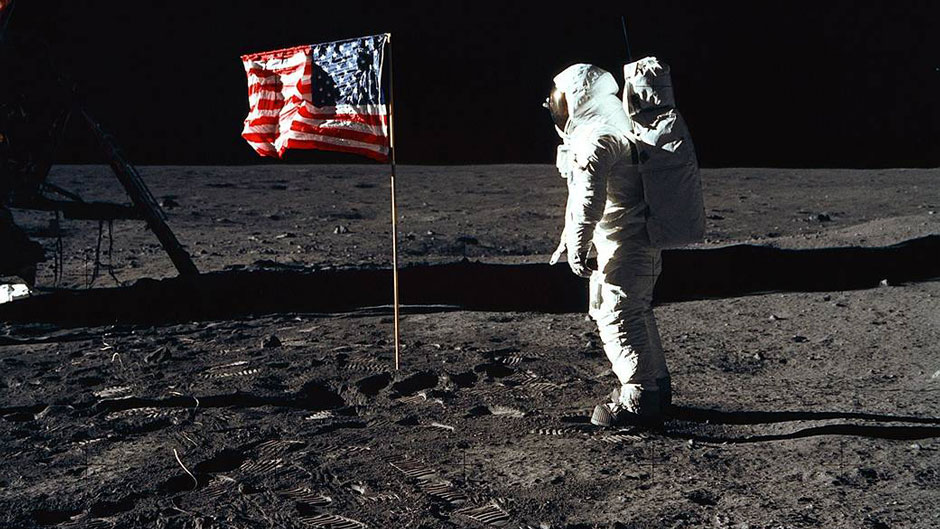The live television images being broadcast from 240,000 miles away were a bit fuzzy and grainy, but Marvin Dawkins, sitting in the student lounge of a Yale University residence hall, could still make out a fair amount of detail.
It was July 20, 1969, just a few minutes before 11 p.m. EST, and Dawkins, then an undergraduate attending classes at Yale as part of summer scholars program, had joined a group of about 12 other students to watch astronaut Neil Armstrong’s historic first steps on the moon.
“We were all excited, of course. And how could you not be on an occasion as momentous as that,” recalled Dawkins, now a professor of sociology at the University of Miami. “But at the same time, it was a moment when many young students were disillusioned with what was transpiring around the world, especially in the United States. As people continued to protest the Vietnam War and as the civil rights movement continued, some questioned the investment in sending humans to the moon, not simply in cost but in energy and attention.
“Still, though,” Dawkins continued, “it was a great moment for America and the space program, and I’ll always remember it.”
As the nation marks the 50th anniversary of Apollo 11, members of the University of Miami community who were alive half a century ago and can recall the landmark event reflect on where they were when Armstrong set foot on the lunar surface and on how the mission changed us.
Professor of international studies Bruce Bagley was with his wife on the streets of Bogota, Colombia, watching the moonwalk unfold on a television set playing in the display window of an appliance store. “We were in the Peace Corps and too poor to own a TV,” he recalled.
But while Bagley didn’t have what you would consider the best seat in the house to watch history unfold, the view he did have was good enough that it made him feel “proud” of what Armstrong and his fellow astronauts had accomplished. It was, he said, “as if mankind was taking a giant new step into the future.”
The jubilation being exuded in the living room of one Tuscola, Illinois, home on the night of July 20, 1969 was so infectious that even a child got swept up into the emotions of that night. “I remember watching the television and seeing these men bunny hop on the surface of the moon,” recalled Victoria Coverstone, professor and chair of mechanical and aerospace engineering at the College of Engineering, who was only 6 when she and her mother watched Armstrong’s historic walk.
“I didn’t completely understand everything,” she said, “but I definitely understood how proud my Mom was. I listened to the broadcasters talk about how brave the astronauts were. And even though I was just a little girl, a part of me thought, ‘That’s what I want to aspire to.’ ”
And, in a sense, she did. Today, Coverstone is conducting research on generating localized magnetic fields on Mars that would protect astronauts from the harmful levels of radiation that bombard the Red Planet. “If I’d been born 20 years before Apollo 11, I don’t know for certain that I would have chosen my career path,” she said. “So I do think the moon landing did play an important part in why I became an aerospace engineer.”
While Coverstone was in her childhood home watching the walk, David Abraham was in Prague, “bumming around,” he said, after graduating from college.
“Prague was wildly celebratory—America’s success was enacted as a kind of protest against the suppression of the Communist Spring not long before,” said Abraham, now a professor at the School of Law. “At the same time, body counts were rapidly rising in Vietnam; protests were increasingly militant as Nixon expanded the ruthless bombing. The civil rights movement had gone from legal success to socio-economic grief, and the murder of Martin Luther King had brought great hurt and depression down on the land.”
Abraham pondered the impact of the Apollo 11 mission. “I’m not sure that the moon landing changed us much at all,” he explained. “It furthered certain technologies that we see today in both AI and weaponry. The belief in irreversible progress seems to have disappeared or is taken for granted without especially making our lives better.”
For Serina Gerundo, senior administrative assistant in the Division of Development and Alumni Relations, Armstrong’s history-making walk was a unifying event. She was 14 back then, watching the walk with her family in the living room of their Homestead, Florida, home and then reading every detail about it in the next day’s Miami Herald newspaper.
“Homestead schools had just started desegregating,” she recalled, “and the moon landing proved to be a uniting event that touched our lives. It was a moment in time that we all had in common.”

